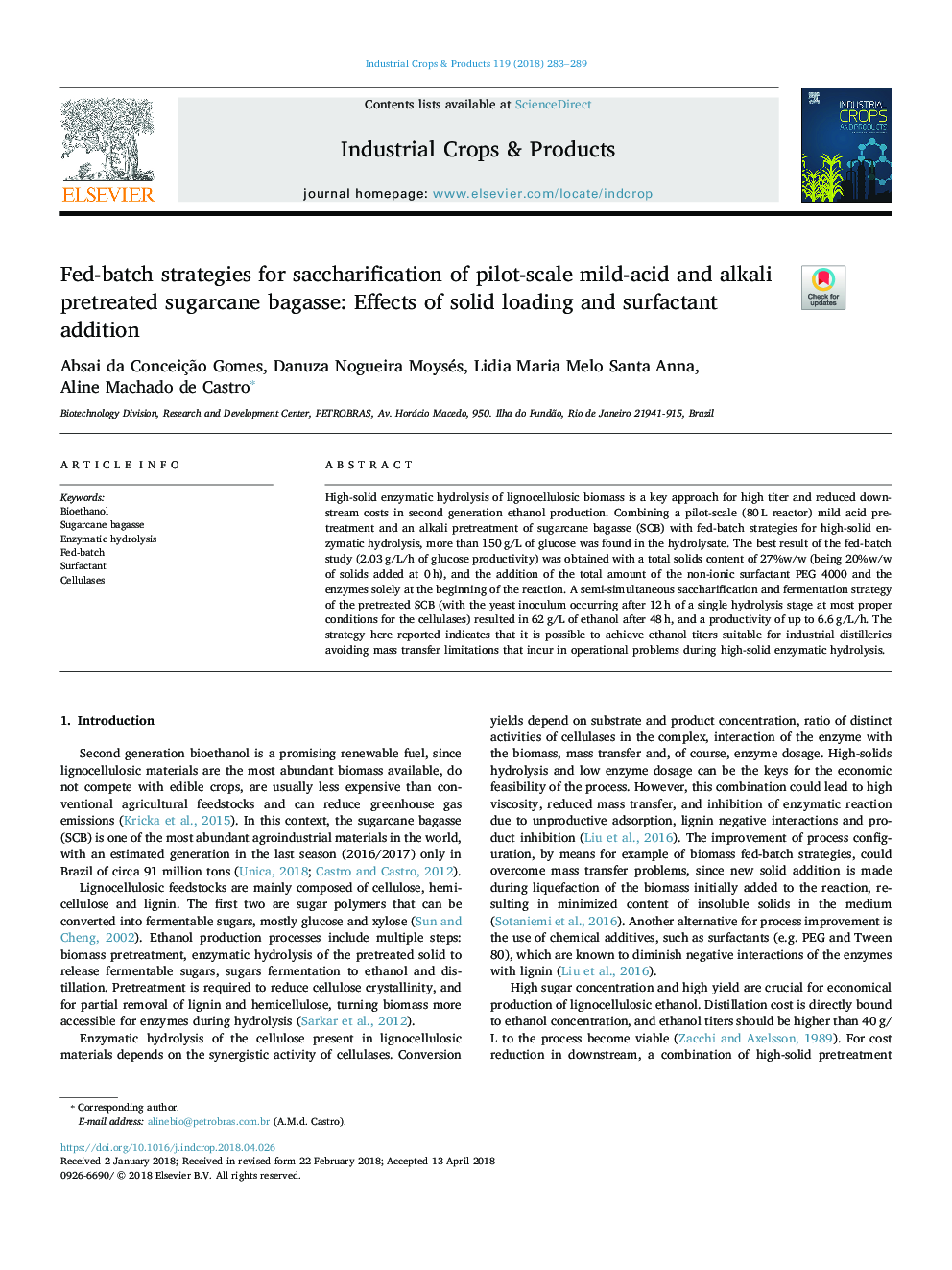| Article ID | Journal | Published Year | Pages | File Type |
|---|---|---|---|---|
| 8880002 | Industrial Crops and Products | 2018 | 7 Pages |
Abstract
High-solid enzymatic hydrolysis of lignocellulosic biomass is a key approach for high titer and reduced downstream costs in second generation ethanol production. Combining a pilot-scale (80â¯L reactor) mild acid pretreatment and an alkali pretreatment of sugarcane bagasse (SCB) with fed-batch strategies for high-solid enzymatic hydrolysis, more than 150â¯g/L of glucose was found in the hydrolysate. The best result of the fed-batch study (2.03â¯g/L/h of glucose productivity) was obtained with a total solids content of 27%w/w (being 20%w/w of solids added at 0â¯h), and the addition of the total amount of the non-ionic surfactant PEG 4000 and the enzymes solely at the beginning of the reaction. A semi-simultaneous saccharification and fermentation strategy of the pretreated SCB (with the yeast inoculum occurring after 12â¯h of a single hydrolysis stage at most proper conditions for the cellulases) resulted in 62â¯g/L of ethanol after 48â¯h, and a productivity of up to 6.6â¯g/L/h. The strategy here reported indicates that it is possible to achieve ethanol titers suitable for industrial distilleries avoiding mass transfer limitations that incur in operational problems during high-solid enzymatic hydrolysis.
Related Topics
Life Sciences
Agricultural and Biological Sciences
Agronomy and Crop Science
Authors
Absai da Conceição Gomes, Danuza Nogueira Moysés, Lidia Maria Melo Santa Anna, Aline Machado de Castro,
